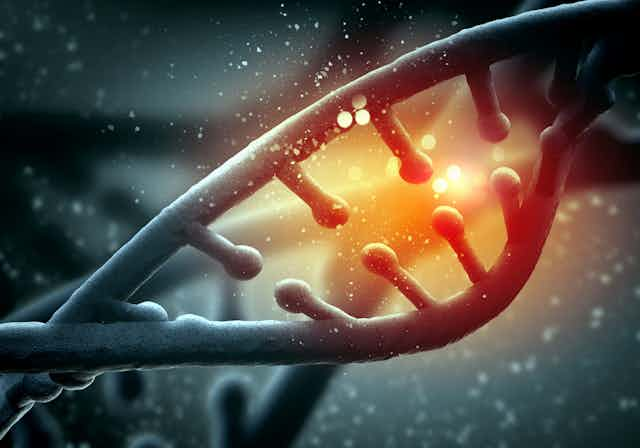Researching rare diseases and treatments can be a challenging task – not least because their rarity means there may be few patients available for genetic testing, and funding is likely to be very limited. However, a greater knowledge of the way rare conditions affect the human body does not just benefit those affected: it can impact positively on the healthcare of everyone, by giving us a better understanding of how the body’s cells work.
By definition a rare disease is a condition which affects fewer than five in 10,000 people. In reality, this means it could affect several thousand people or just a tiny handful. Some conditions are so rare that there is no established name for them, while others, such as cystic fibrosis and Duchenne muscular dystrophy, are much more familiar. Taken together, around 7% of the population will be diagnosed with a rare disease at some point in their life.
Many rare diseases arise as a result of problems with a single gene in a person’s DNA. Depending on which gene is affected and what job the protein it codes for normally performs in the cell, different symptoms will occur, and become characteristics of that particular genetic condition. These single gene disorders can give us a real insight into the biology of our cells. Knowing whether the gene affected is normally involved in controlling cell growth, cell division or the manufacture of a particular substance can help us understand the pathways – the highly regulated step-by-step events – that control these processes.
Take Hutchinson–Gilford progeria syndrome for example. The disease is characterised by premature ageing symptoms, such as wrinkled skin, hair loss, stiff joints and a hardening of the arteries. Though we know that the syndrome is caused by the build up of a faulty protein in the cells, the exact reason why there are “ageing-like” symptoms is not yet known. But this protein also accumulates in normal human cells, so understanding its function could shed light on the progression of ageing in the general population.
Clearly, the insights we could gain from studying rare conditions like Hutchinson–Gilford, have big benefits for wider society too. And as we unravel the mechanisms behind different processes, there is potential in the trickle down effects to expand the arsenal of drugs available to fight more commonly known conditions like cancer.
Linking rare and common
Often, genes that are involved in repairing DNA become mutated in cancer, and are part of the reason a cancer develops. You will probably have heard of the BRCA1 and BRCA2 genes which are linked to breast cancer. It is less commonly known, however, that the BRCA2 gene is one of the genes mutated in a rare childhood disease called Fanconi anaemia, where BRCA2 is called FANCD1. The finding that both these diseases have a common gene linked two fields of medical research, leading to a fuller picture of the DNA repair pathway and potentially allowing the development of new treatment.
But this is not just about theoretical research: treatments are now being trialled for cancer following the investigation of rare conditions.
Tuberous sclerosis complex (TSC) affects about one in 6,000 births. Its characteristics include the development of benign tumours in multiple organs of the body. By analysing the genetics of families where several members were affected by TSC, as well as individuals who were the only affected person in the family, scientists identified the genes involved.
Subsequent research found that the proteins made by these genes normally control a key cell growth pathway, which is overactive in TSC cells due to the “brakes” in the pathway being faulty. A drug to block this process, rapamycin, has already been successfully trialled as a medication in TSC patients.
This same growth pathway is often out of control in sporadic cancers – those are cancers that are not caused by an inherited change in DNA – such as kidney and liver cancer. So rapamycin is currently being trialled in cancer patients with confirmed mutations in this pathway. This is in addition to trials alongside conventional chemotherapy in some advanced cancers too.
The more we can learn about the processes of cells, the better when it comes to treating rare illnesses, but there is one big limitation to all of this: funding. At present, most rare disease research is funded by small charities, dedicated to helping those affected and their families. But as more people understand that though these diseases are rare, we hope the world will realise that finding treatments for them could have huge benefits the rest of society too.

